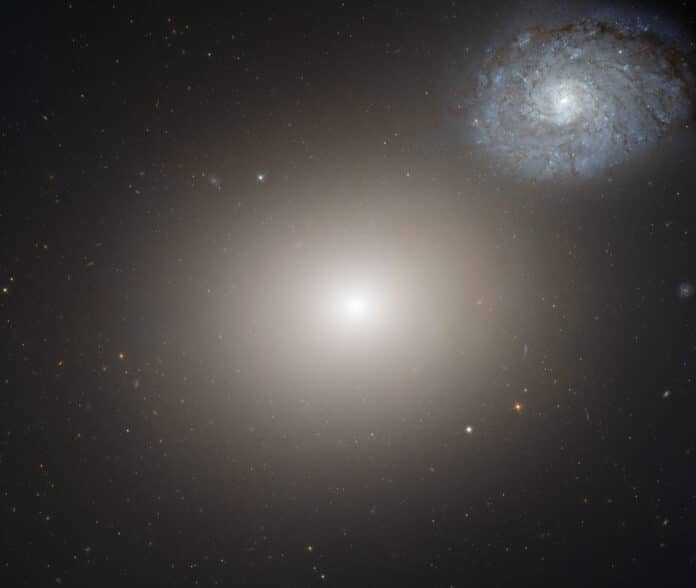NASA’s Hubble Space Telescope has captured an elliptical galaxy M60 (the large, diffuse galaxy at the center) along with the bluish spiral galaxy NGC 4647 (upper right). At the center of galaxy M60 lies a huge black hole that is 4.5 billion times larger than our Sun, one of the most massive black holes ever found.
Located in the constellation Virgo- roughly 54 million light-years from Earth, M60 has a diameter of 120,000 light-years. It is as massive as one trillion suns. It has an apparent magnitude of 9.8, and its central region can be seen through a small telescope most easily during May.
NGC 4647 can 5ybe seen with more giant telescopes. The galaxy is about two-thirds M60 — or roughly the size of the Milky Way — and is much less massive.
The two galaxies form a pair known as Arp 116. The extent to which these two galaxies interact has been a long-standing question for astronomers. There is no proof of new star formation, which would be one of the most obvious signals that the two galaxies are truly interacting, despite appearing to overlap from Earth.
